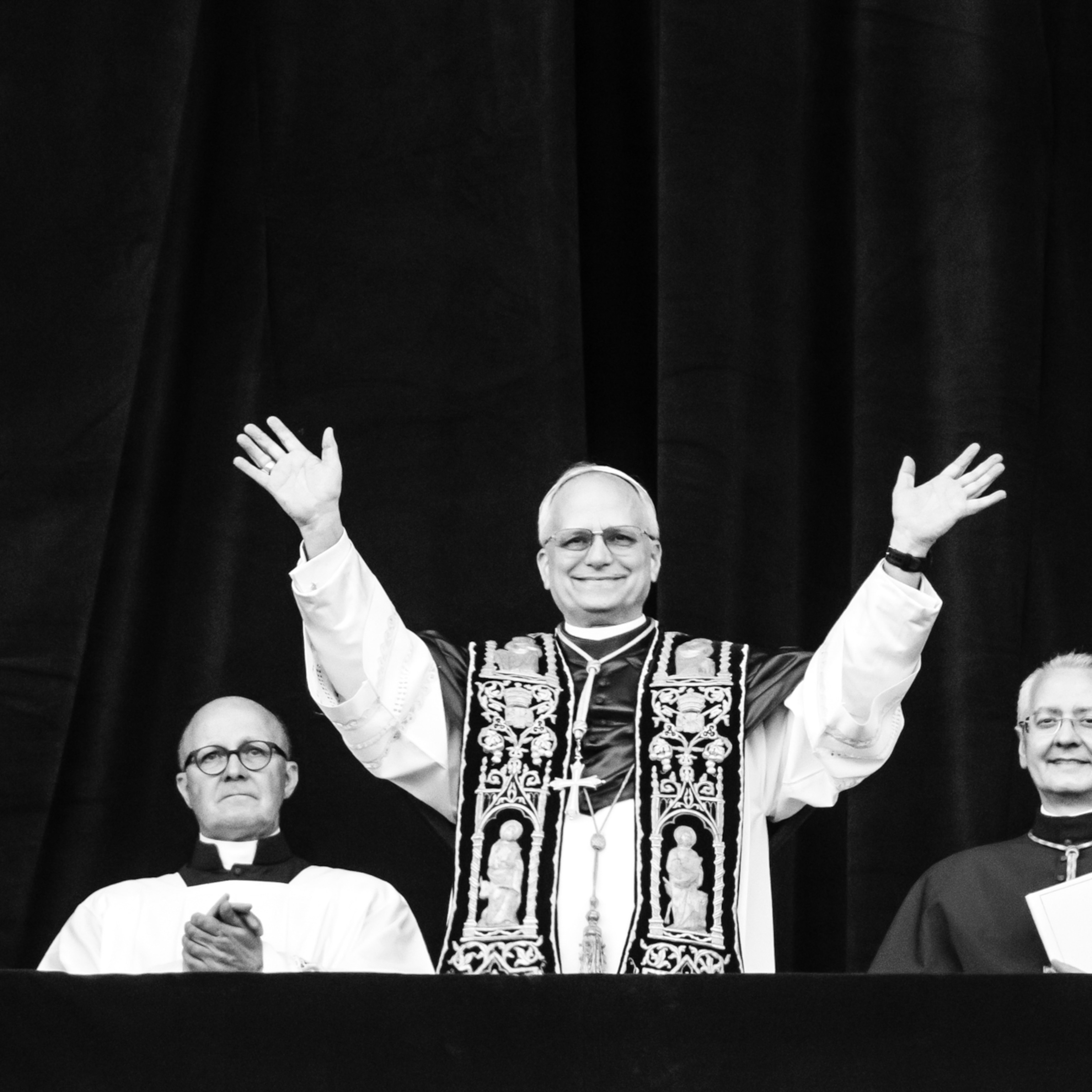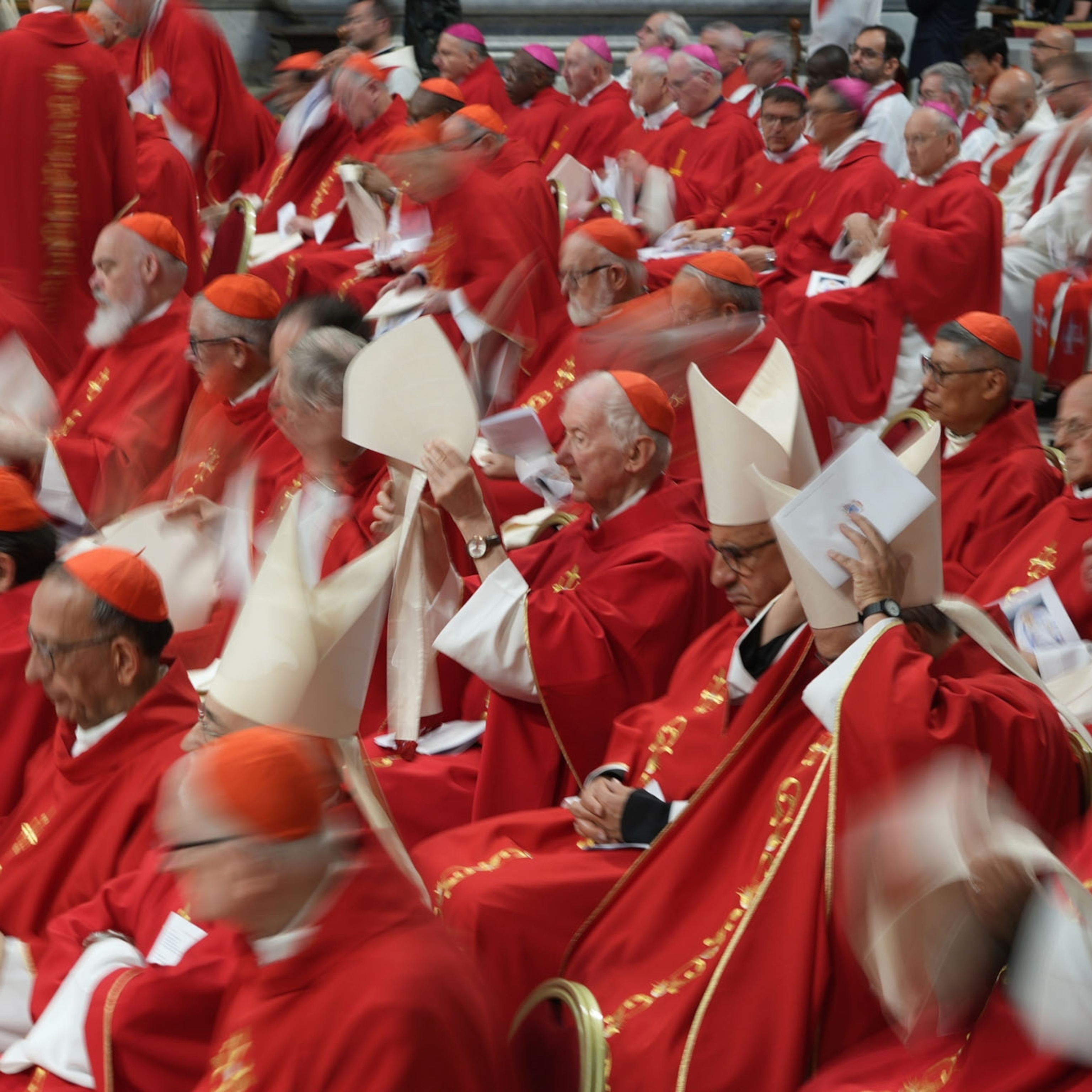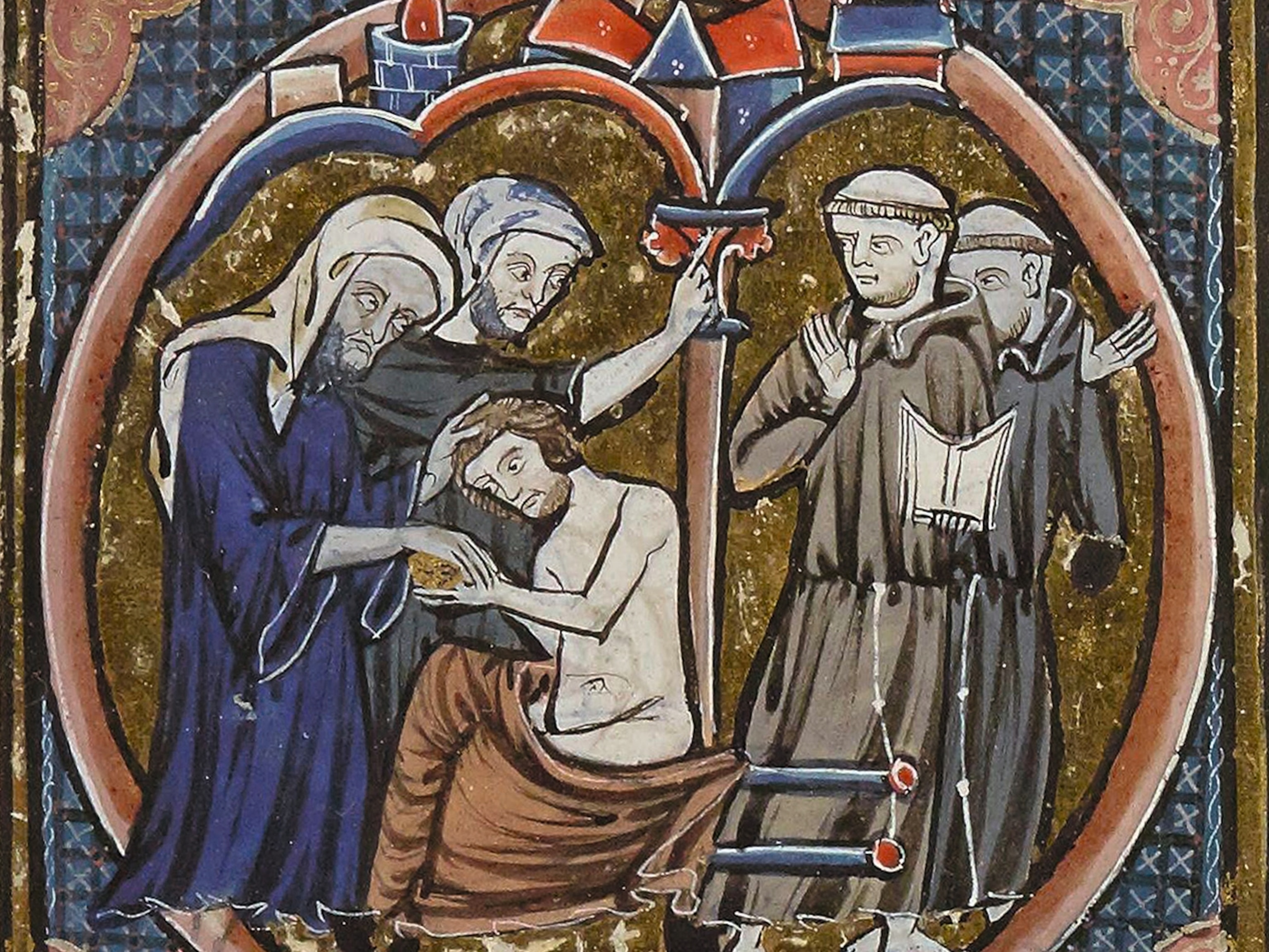Pope Francis’s Christmas gift to a grieving photographer
When a photographer received heartbreaking news during a difficult assignment, he was desperate. Then the pope took a detour.

The best pictures are not taken; they are gifts. Fittingly, this one arrived on Christmas Day in 2014. It materialized in the Sistine Chapel, miraculously, as if it had descended from Michelangelo’s “Creation of Adam” in the ceiling above. But it came to me at a time so difficult that even today I question whether I should have been there at all.
Pope Francis had been elected the year before. Somewhat surprisingly, this plain, elderly man, who wished for a church that was “poor and for the poor,” had become an international celebrity, a coveted subject for almost every major news organization. I wasn’t at the top of anyone’s list to photograph him, although I lived in Rome at the time. None of my previous projects were remotely similar, and I knew little about Vatican City or Pope Francis. But during a visit to National Geographic, I’d made an offhand comment about the pontiff to an editor. To my astonishment, he instructed me to shoot the story. I suddenly felt like the dog that had caught the car. I had no idea how to proceed.
I had to learn to navigate the Vatican. Journalists deluge the Holy See’s communications offices with petitions for access. Success is limited; photographers are generally kept far from the pontiff. To aid my cause, I recruited Editor in Chief Susan Goldberg, as well as all three U.S. ambassadors in Rome—the ambassadors to Italy, the Holy See, and the UN agencies located there—for a lunch with Vatican officials. My petition was granted, but that proved to be only the first step in a months-long process.
I was deposited among the Vaticanisti, the journalists who cover the pontiff, shooting the same imagery as everyone else. From that vantage point, the pope is a mere speck on marbled horizons. Then, as if in punishment for my sins, the magazine elevated the story to “cover” status—a terrifying development that demanded exceptional access.
My deliverance came in the form of the pope’s photographer: Francesco Sforza, a perpetually cheery, humble fellow who can scarcely get to his Vatican assignments on time for all the people stopping him to chat. His office is adorned with battered, ancient cameras used by photographers of bygone popes. Three decades ago he’d helped National Geographic photographer James Stanfield shoot a Vatican story. Sforza agreed to take me under his wing, to act as my chaperone, to get me close. It’s difficult to overstate my good fortune or Sforza’s selflessness. I was told that it was the first time Vatican officials had allowed such an arrangement with a photojournalist.
I soon tested my access, somewhat cheekily, by walking up the blindingly white steps of St. Peter’s Basilica, directly to the side of the pontiff as he greeted fervent visitors. Nobody seemed to notice.
Pope Francis’s affable security detail accommodated me with great collegiality, despite the crowds around him. These men have the unenviable job of safeguarding a world leader who shrugs off protection. They also wrangle squirming infants thrust into their arms by euphoric parents, lifting the babes to the Pope mobile for a quick blessing from Francis, then returning them safely to their procreators. I ran along with Sforza often in that wild caravan, staining my two suits with sweat, stumbling into the invariably polite bodyguards while trying not to be run over, literally, by the pope.
Then my sister called. My father was in the hospital, she said. He wouldn’t be returning home. She added, with emphasis, “Dad said, ‘Don’t screw up your assignment.’”
All this access implied a trust that I had a responsibility not to betray. Sforza and his staff of two—Simone and Mario—guided me through Vatican protocols, but otherwise I had remarkable freedom, without any suggestion of censorship. Only once did anyone ask me, as a favor, not to take a photo of Francis. The pope was clawing his way out of the back seat of the cramped Ford Focus he often traveled in; a cardinal thought it looked undignified. Fair enough.
I tried to avoid attracting attention—difficult given my awkward six-foot-five-inch frame. Once, I realized too late that I’d positioned myself in a circle of bishops greeting the pope next to Michelangelo’s “Pietà.” There was no inconspicuous way out. As Francis traversed the arc toward me, shaking hands, I pretended to examine my camera’s settings. When I looked up, he was standing before me, hand extended, eyebrows raised, waiting for me to notice him. Status or occupation never seemed to concern him.
As the assignment neared its end, I found myself desperately seeking a worthy cover photo of Francis, a high bar for one of the most photographed people in the world. Nothing quite worked, and my editor was looking for alternatives from other photographers. To have someone else’s image on the cover would have been a defeat, a failure to deliver for people who’d placed their trust in me and given me an extraordinary opportunity. I banked on the approaching Christmas ceremonies as my last best hope.
As I worked on, my father’s health was plummeting. The cancer that had been in remission for many years had returned and devoured his bones. That Christmas would be his last.
Abandoning an assignment is no small thing to contemplate. But in this case, the alternative felt far worse. During one Mass I perched on the precarious catwalk that clings to the golden ceiling of St. Peter’s Basilica, alternately shooting photos and using my phone to search for flights home to Indiana. Then my sister called. My father was in the hospital, she said. He wouldn’t be returning home. She added, with emphasis, “Dad said, ‘Don’t screw up your assignment.’” I decided to stay a few more days.
On Christmas Day the pontiff addressed a teeming crowd. I put all my hope for a cover image on that spectacle. At the last minute, however, a cardinal became nervous. Sforza delivered the bad news: There wasn’t any room for me on the balcony. The plan collapsed, and my gamble felt shameful.
I would have one last moment with Pope Francis. After the crowd dispersed, he greeted me, shook my hand, and we wished each other happy Christmas. Then he turned to speak to one of his aides. Sforza breathlessly reported what he’d overheard: “He’s going to the Sistine Chapel.” I followed him.
The pope paused in that ethereal chamber for just a few seconds, gazing up at Michelangelo’s masterpiece in fragile silence. My friend and guardian angel Francesco Sforza whispered, “There is your cover.” I pressed the shutter and wondered whether this was Francis’s Christmas gift to me.
I made it back to Indiana, just in time.








